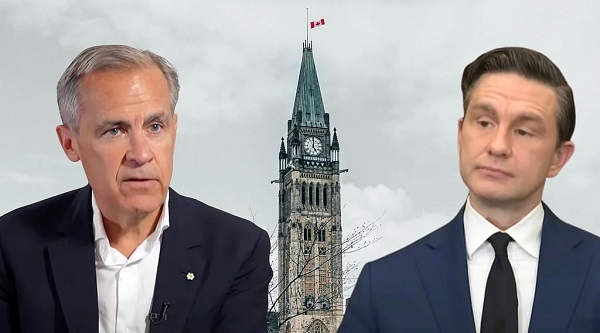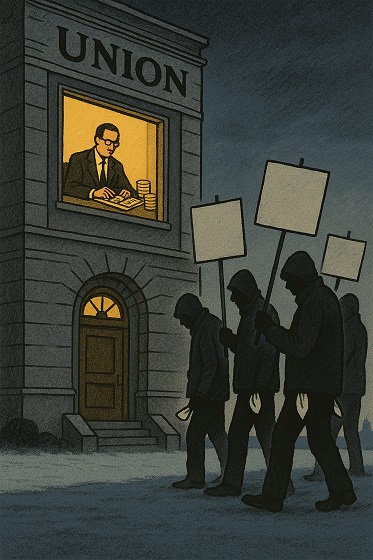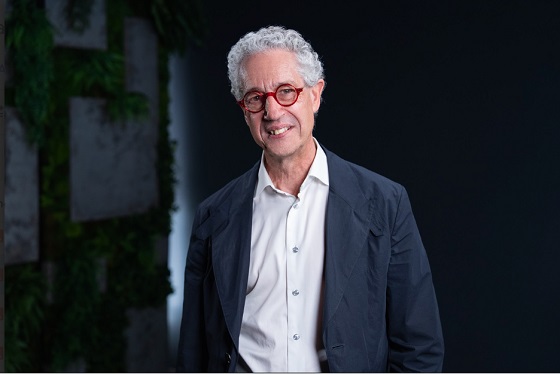Entertainment
Elon Musk funds conservative actress Gina Carano’s wrongful termination lawsuit against Disney

From LifeSiteNews
‘As a sign of X Corp’s commitment to free speech, we’re proud to provide financial support for Gina Carano’s lawsuit,’ said X’s head of business operations.
Actress Gina Carano is suing Disney-owned Lucasfilm for wrongful termination from Star Wars: The Mandalorian, and Elon Musk is paying her legal bills
Carano was fired in 2021 after she posted to social media, including X (formerly Twitter), conservative opinions on hot-button issues such as gender pronouns usage, Black Lives Matter, election fraud, the COVID-19 lockdowns, and mask mandates.
Disney “bullied Ms. Carano, trying to force her to conform to their views about cultural and political issues, and when that bullying failed, they fired her,” explained Gene Schaerr, Carano’s attorney, in a statement.
The suit explains that at one point, Disney/Lucasfilm demanded that Carano “participate in a Zoom call with Lucasfilm president Kathleen Kennedy and 45 employees who identify as part of the LGBTQ+ community, going so far as to say that her willingness to endure such harassment and humiliation was a ‘litmus test’ for her.”
Following her termination by the entertainment giant, Carano’s agent, United Artists, and her entertainment attorney, dropped her as a client.
Elon Musk is making good on his promise
Elon Musk has followed through on the promise he made last fall to fund the legal bills of people treated unfairly by employers over their posts on X/Twitter.
“As a sign of X Corp’s commitment to free speech, we’re proud to provide financial support for Gina Carano’s lawsuit, empowering her to seek vindication of her free speech rights on X and the ability to work without bullying, harassment, or discrimination,” said Joe Benarroch, X’s head of business operations.
Carano announced her lawsuit on X on Tuesday:
After my 20 years of building a career from scratch, and during the regime of former Disney CEO Bob Chapek, Lucasfilm made this statement on Twitter, terminating me from The Mandalorian: “Gina Carano is not currently employed by Lucasfilm & there are no plans for her to be in the future. Nevertheless, her social media posts denigrating people based on their cultural & religious identities are abhorrent & unacceptable.”
“Nothing could be further from the truth,” explained the MMA fighter turned actress. “The truth is I was being hunted down from everything I posted to every post I liked because I was not in line with the acceptable narrative of the time. My words were consistently twisted to demonize & dehumanize me as an alt right wing extremist. It was a bullying smear campaign aimed at silencing, destroying & making an example out of me.”
“Artists do not sign away our rights as American citizens when we enter into employment,” she added.
The 59-page civil suit, which was filed in California federal court, begins with a clever, iconic Star Wars-style introduction:
A short time ago in a galaxy not so far away, Defendants made it clear that only one orthodoxy in thought, speech, or action was acceptable in their empire, and that those who dared to question or failed to fully comply would not be tolerated. And so it was with Carano. After two highly acclaimed seasons on The Mandalorian as Rebel ranger Cara Dune, Carano was terminated from her role as swiftly as her character’s peaceful home planet of Alderaan had been destroyed by the Death Star in an earlier Star Wars film. And all this because she dared voice her own opinions, on social media platforms and elsewhere, and stood up to the online bully mob who demanded her compliance with their extreme progressive ideology.
Defendants’ wrath over their employees’ social media posts also differed depending on sex. Even though “the Force is female,” Defendants chose to target a woman while looking the other way when it came to men. While Carano was fired, Defendants took no action against male actors who took equally or more vigorous and controversial positions on social media.
But the rule of law still reigns over the Defendants’ empire. And Carano has returned to demand that they be held accountable for their bullying, discriminatory, and retaliatory actions—actions that inflicted not only substantial emotional harm, but millions of dollars in lost income.
The lawsuit cites many examples of appalling social media posts by other Disney/Lucasfilm personalities that went unaddressed and unpunished:
In several social media posts, original Star Wars star Mark Hamill made comparisons of Americans who support President Trump with Nazis while also asserting that Trump is the KKK’s candidate.
Co-star Pedro Pascal, who played the role of the Mandalorian, often expressed positive views on the Black Lives Matter movement, LGBTQ+ rights, and protests for abortion rights. He also compared Trump to Hitler. During Pride Month, 2020, he posted two Disney-owned Muppet characters, Bert and Ernie, drawn as activists waving a transgender and LGBTQ+ pride flag and promoting “Black Lives Matter” and “Defund the Police.”

Disney even rehired Guardians of the Galaxy director James Gunn in 2019 after terminating him in 2018 for horrific social media posts years earlier such as “I like when little boys touch me in my silly place,” and “The Expendables was so manly I ****d the ***t out of the little pussy boy next to me! The boys ARE back in town!”
Yet Disney failed to offer to reinstate Carano, and turned a blind eye to Hamill’s and Pascal’s offensive posts.
“I would love to pick up where I left off & continue my journey of creating & participating in story-telling, which is my utmost passion & everything I worked so hard for,” said Carano on Tuesday. “It has been difficult to move forward with the lies & labels stuck on me, backed & encouraged by the most powerful entertainment company in the world.”
“I am grateful someone has come to my defense in such a powerful way & look forward to clearing my name,” she added.
Business
Will Paramount turn the tide of legacy media and entertainment?


From the Daily Caller News Foundation
The recent leadership changes at Paramount Skydance suggest that the company may finally be ready to correct course after years of ideological drift, cultural activism posing as programming, and a pattern of self-inflicted financial and reputational damage.
Nowhere was this problem more visible than at CBS News, which for years operated as one of the most partisan and combative news organizations. Let’s be honest, CBS was the worst of an already left biased industry that stopped at nothing to censor conservatives. The network seemed committed to the idea that its viewers needed to be guided, corrected, or morally shaped by its editorial decisions.
This culminated in the CBS and 60 Minutes segment with Kamala Harris that was so heavily manipulated and so structurally misleading that it triggered widespread backlash and ultimately forced Paramount to settle a $16 million dispute with Donald Trump. That was not merely a legal or contractual problem. It was an institutional failure that demonstrated the degree to which political advocacy had overtaken journalistic integrity.
Dear Readers:
As a nonprofit, we are dependent on the generosity of our readers.
Please consider making a small donation of any amount here.
Thank you!
For many longtime viewers across the political spectrum, that episode represented a clear breaking point. It became impossible to argue that CBS News was simply leaning left. It was operating with a mission orientation that prioritized shaping narratives rather than reporting truth. As a result, trust collapsed. Many of us who once had long-term professional, commercial, or intellectual ties to Paramount and CBS walked away.
David Ellison’s acquisition of Paramount marks the most consequential change to the studio’s identity in a generation. Ellison is not anchored to the old Hollywood ecosystem where cultural signaling and activist messaging were considered more important than story, audience appeal, or shareholder value.
His professional history in film and strategic business management suggests an approach grounded in commercial performance, audience trust, and brand rebuilding rather than ideological identity. That shift matters because Paramount has spent years creating content and news coverage that seemed designed to provoke or instruct viewers rather than entertain or inform them. It was an approach that drained goodwill, eroded market share, and drove entire segments of the viewing public elsewhere.
The appointment of Bari Weiss as the new chief editor of CBS News is so significant. Weiss has built her reputation on rejecting ideological conformity imposed from either side. She has consistently spoken out against antisemitism and the moral disorientation that emerges when institutions prioritize political messaging over honesty.
Her brand centers on the belief that journalism should clarify rather than obscure. During President Trump’s recent 60 Minutes interview, he praised Weiss as a “great person” and credited her with helping restore integrity and editorial seriousness inside CBS. That moment signaled something important. Paramount is no longer simply rearranging executives. It is rethinking identity.
The appointment of Makan Delrahim as Chief Legal Officer was an early indicator. Delrahim’s background at the Department of Justice, where he led antitrust enforcement, signals seriousness about governance, compliance, and restoring institutional discipline.
But the deeper and more meaningful shift is occurring at the ownership and editorial levels, where the most politically charged parts of Paramount’s portfolio may finally be shedding the habits that alienated millions of viewers.The transformation will not be immediate. Institutions develop habits, internal cultures, and incentive structures that resist correction. There will be internal opposition, particularly from staff and producers who benefited from the ideological culture that defined CBS News in recent years.
There will be critics in Hollywood who see any shift toward balance as a threat to their influence. And there will be outside voices who will insist that any move away from their preferred political posture is regression.
But genuine reform never begins with instant consensus. It begins with leadership willing to be clear about the mission.
Paramount has the opportunity to reclaim what once made it extraordinary. Not as a symbol. Not as a message distribution vehicle. But as a studio that understands that good storytelling and credible reporting are not partisan aims. They are universal aims. Entertainment succeeds when it connects with audiences rather than instructing them. Journalism succeeds when it pursues truth rather than victory.
In an era when audiences have more viewing choices than at any time in history, trust is an economic asset. Viewers are sophisticated. They recognize when they are being lectured rather than engaged. They know when editorial goals are political rather than informational. And they are willing to reward any institution that treats them with respect.
There is now reason to believe Paramount understands this. The leadership is changing. The tone is changing. The incentives are being reassessed.
It is not the final outcome. But it is a real beginning. As the great Winston Churchill once said; “Now this is not the end. It is not even the beginning of the end. But it is, perhaps, the end of the beginning”.
For the first time in a long time, the door to cultural realignment in legacy media is open. And Paramount is standing at the threshold and has the capability to become a market leader once again. If Paramount acts, the industry will follow.
Bill Flaig and Tom Carter are the Co-Founders of The American Conservatives Values ETF, Ticker Symbol ACVF traded on the New York Stock Exchange. Ticker Symbol ACVF
Learn more at www.InvestConservative.com
Censorship Industrial Complex
The FCC Should Let Jimmy Kimmel Be

|
||||||||||||||||||||||||||||||||||||||||||||||||||
|
||||||||||||||||||||||||||||||||||||||||||||||||||
|
||||||||||||||||||||||||||||||||||||||||||||||||||
|
||||||||||||||||||||||||||||||||||||||||||||||||||
|
||||||||||||||||||||||||||||||||||||||||||||||||||
|
||||||||||||||||||||||||||||||||||||||||||||||||||
|
||||||||||||||||||||||||||||||||||||||||||||||||||
|
|
||||||||||||||||||||||||||||||||||||||||||||||||||
|
||||||||||||||||||||||||||||||||||||||||||||||||||
-

 Alberta2 days ago
Alberta2 days agoAlberta to protect three pro-family laws by invoking notwithstanding clause
-

 Business2 days ago
Business2 days agoCanada is failing dismally at our climate goals. We’re also ruining our economy.
-

 Health1 day ago
Health1 day agoCDC’s Autism Reversal: Inside the Collapse of a 25‑Year Public Health Narrative
-

 Daily Caller1 day ago
Daily Caller1 day agoBREAKING: Globalist Climate Conference Bursts Into Flames
-

 Health1 day ago
Health1 day agoBREAKING: CDC quietly rewrites its vaccine–autism guidance
-

 Energy1 day ago
Energy1 day agoHere’s what they don’t tell you about BC’s tanker ban
-

 Bruce Dowbiggin1 day ago
Bruce Dowbiggin1 day agoBurying Poilievre Is Job One In Carney’s Ottawa
-

 Alberta2 days ago
Alberta2 days ago‘Weird and wonderful’ wells are boosting oil production in Alberta and Saskatchewan













